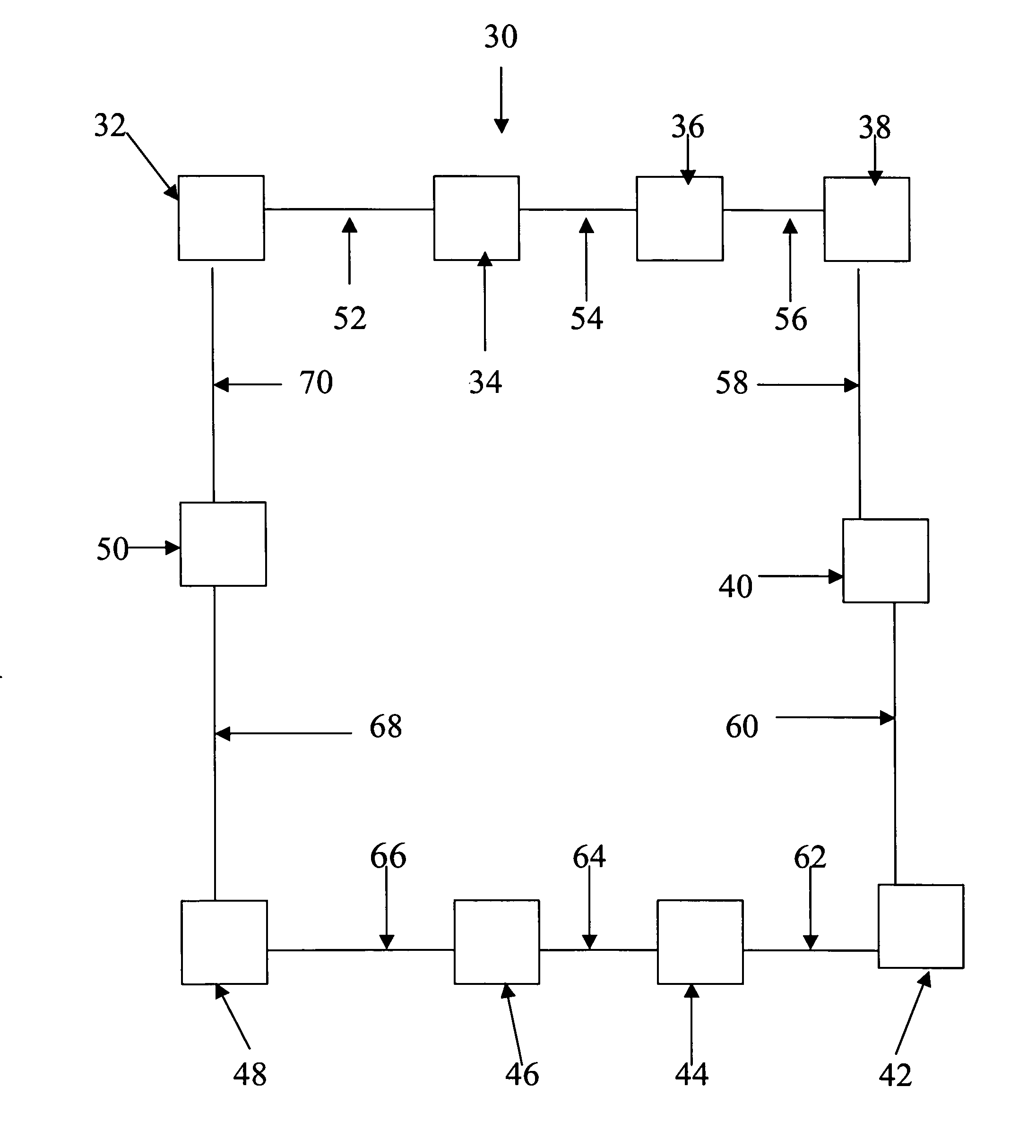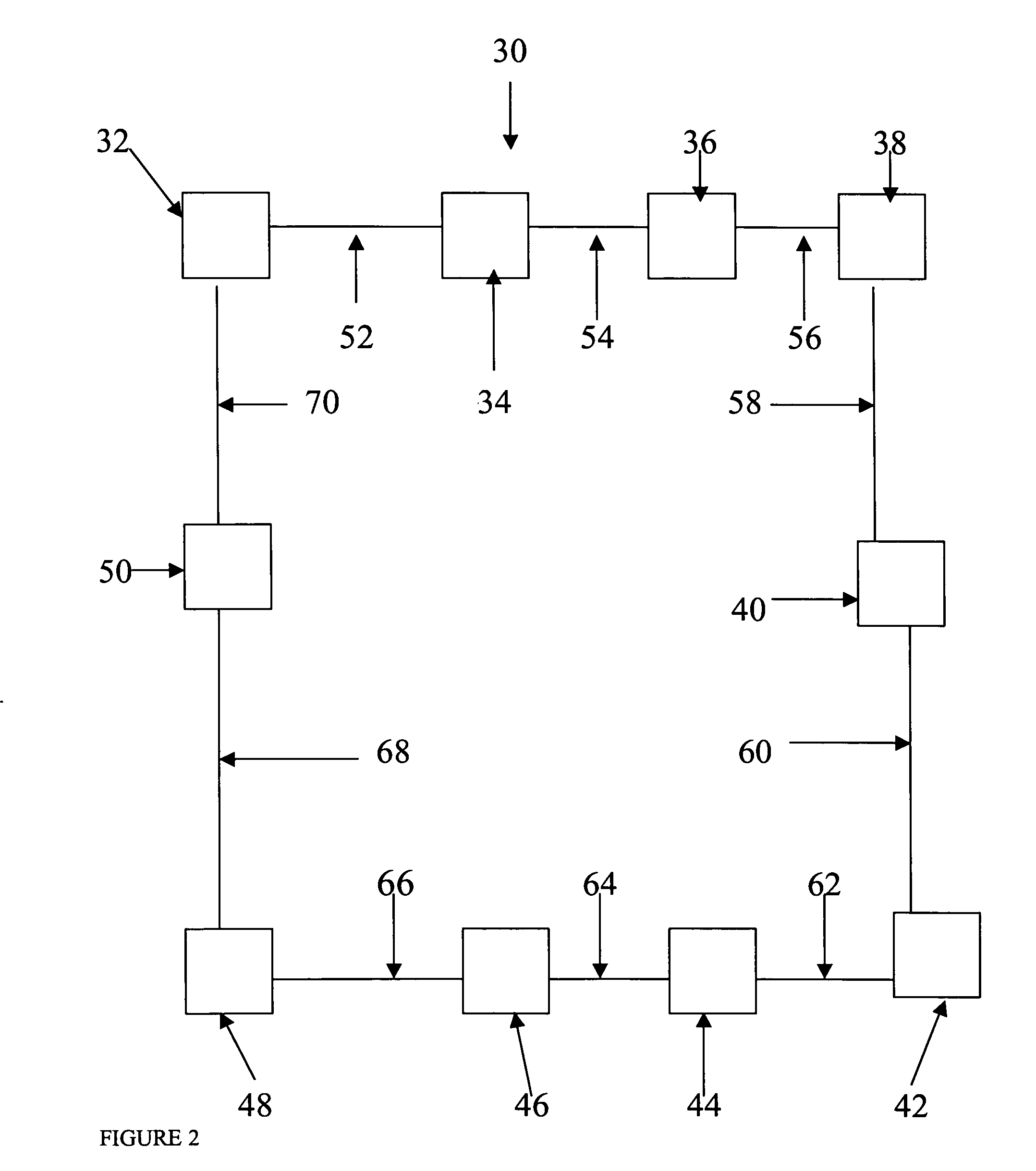Method of determining at least one variable of a WDM optical network
- Summary
- Abstract
- Description
- Claims
- Application Information
AI Technical Summary
Benefits of technology
Problems solved by technology
Method used
Image
Examples
Embodiment Construction
[0018] The preferred forms of the invention will now be described with reference to FIGS. 1, 2, 3A and 3B. The appended claims are not limited to the preferred forms and no term and / or phrase used herein is to be given a meaning other than its ordinary meaning unless expressly stated otherwise.
[0019]FIGS. 1, 3A and 3B illustrate a preferred method 10 including steps 12 through 24 for optimizing a WDM optical ring network 30 illustrated in FIG. 2. The WDM optical network 30 includes ten (10) nodes identified by reference numerals 32, 34, 36, 38, 40, 42, 44, 46, 48 and 50. Each pair of adjacent nodes defines a path. For example, a path 52 exists between nodes 32 and 34. Each corresponding pair of nodes 34 and 36, 36 and 38, 38 and 40, 40 and 42, 42 and 44, 44 and 46, 46 and 48, 48 and 50, and 50 and 32 define paths 54, 56, 58, 60, 62, 64, 66, 68 and 70, respectively.
[0020] Each of the paths 52 through 70 in the WDM optical network 30 has a baseline demand. In order to keep the deman...
PUM
 Login to View More
Login to View More Abstract
Description
Claims
Application Information
 Login to View More
Login to View More - R&D
- Intellectual Property
- Life Sciences
- Materials
- Tech Scout
- Unparalleled Data Quality
- Higher Quality Content
- 60% Fewer Hallucinations
Browse by: Latest US Patents, China's latest patents, Technical Efficacy Thesaurus, Application Domain, Technology Topic, Popular Technical Reports.
© 2025 PatSnap. All rights reserved.Legal|Privacy policy|Modern Slavery Act Transparency Statement|Sitemap|About US| Contact US: help@patsnap.com



